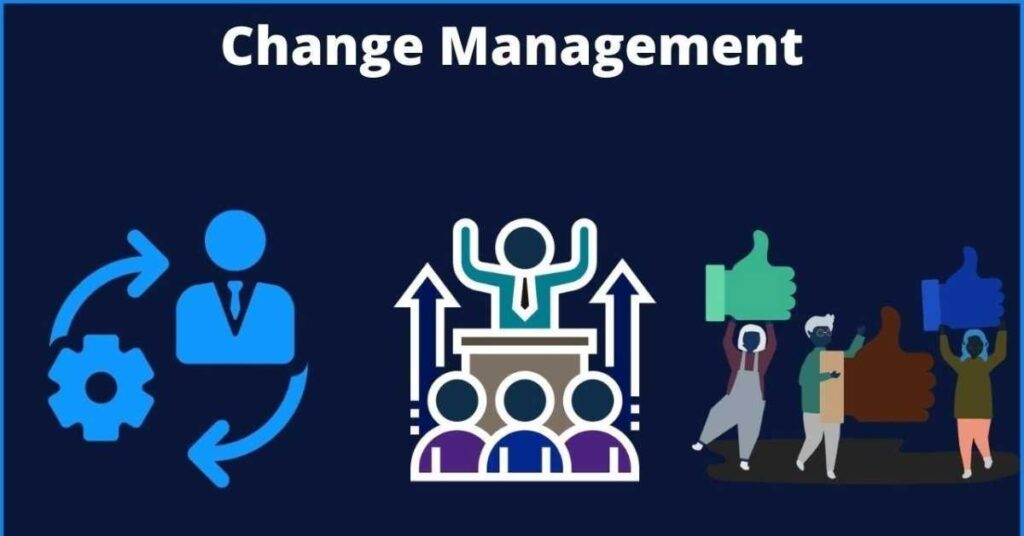Change Management Strategies for Leaders
Master the art of guiding organizations through transformation
In today's rapidly evolving business landscape, a leader's ability to effectively manage change has become a critical competency. Organizations face continuous pressure to transform—whether due to technological disruption, shifting market dynamics, or internal restructuring initiatives. Yet research consistently shows that up to 70% of change initiatives fail to achieve their intended outcomes. The difference between success and failure often lies in the change management strategies employed by leadership.
Understanding Organizational Change
Organizational change is any alteration in structure, technology, culture, or operational methods that affects how work is performed. Changes can be incremental (small, evolutionary adjustments) or transformational (large-scale, revolutionary shifts). Regardless of scale, change disrupts the status quo and creates uncertainty—a state that naturally generates resistance among those affected.
"It isn't the changes that do you in, it's the transitions. Change is situational: the new site, the new boss, the new team roles. Transition is the psychological process people go through to come to terms with the new situation." — William Bridges
The Psychology of Change Resistance
To effectively lead change, leaders must first understand why people resist it. Resistance isn't merely obstinacy—it's a natural human response to perceived threats and uncertainty. Common psychological factors include:
- Loss of control - People resist when they feel changes are being imposed without their input.
- Excess uncertainty - When the future state is unclear, anxiety rises and resistance follows.
- Surprise factor - Changes announced suddenly without preparation are typically met with stronger resistance.
- Concerns about competence - Fear that new requirements will exceed current capabilities generates resistance.
- Ripple effects - Concerns about how changes will affect other aspects of work and personal life.
Understanding these psychological factors is the foundation for designing change strategies that address human concerns rather than simply focusing on operational processes.
Leading Change: Key Frameworks
Several proven frameworks can guide leaders in structuring their approach to change management:
1. Kotter's 8-Step Process
Developed by Harvard Business School professor John Kotter, this sequential model emphasizes creating momentum and urgency:
Create Urgency
Articulate the compelling reasons for change. Use data and emotional appeals to spark motivation.
Form a Coalition
Assemble a cross-functional team of influencers with the skills and credibility to lead change.
Create a Vision
Develop a clear, concise vision of what success looks like after the change.
Communicate the Vision
Share the vision widely, addressing concerns and connecting to organizational values.
Remove Obstacles
Identify and address systems, structures, or individuals blocking progress.
Generate Short-term Wins
Create visible successes early to build momentum and credibility.
Build on Change
Use early wins as a foundation for larger changes; maintain momentum.
Anchor Changes in Culture
Integrate new behaviors and values into organizational culture and operations.
2. The ADKAR Model
Developed by Prosci, ADKAR focuses on the individual journey through change:
Awareness
Understanding why change is necessary
Desire
Engaging in and supporting the change
Knowledge
Understanding how to change
Ability
Implementing required skills and behaviors
Reinforcement
Maintaining the change over time
ADKAR recognizes that organizational change occurs one person at a time, and each individual must progress through all five stages for change to be successful.
3. Bridges' Transition Model
William Bridges focuses on transitions (the psychological process) rather than changes (the situational events):
Ending
Helping people deal with their losses and let go of the old ways
Neutral Zone
Supporting people through the confusing in-between state
New Beginning
Helping people develop new identity, purpose, and energy
Strategic Approaches to Change Management
1. Stakeholder-Centric Change
Different stakeholders experience change differently based on their roles, influence, and personal circumstances. Effective leaders:
- Identify all stakeholder groups affected by the change
- Analyze each group's specific concerns, potential resistance points, and influence level
- Create tailored engagement strategies for each stakeholder segment
- Monitor stakeholder sentiment throughout the change process
Stakeholder Mapping Matrix
Plot stakeholders based on their influence and attitude toward change to determine engagement strategies
Champions
Critical blockers
Supporters
Resistors
2. Strategic Communication
Communication during change must be intentional, consistent, and multidirectional. Leaders should:
| Communication Element | Strategic Approach |
|---|---|
| Message Content | Balance rational arguments (data, business case) with emotional appeals (vision, values) |
| Frequency | Communicate 5-7 times more than seems necessary; repetition builds understanding |
| Channels | Use multiple formats (meetings, emails, videos, one-on-ones) to reach different preferences |
| Feedback Loops | Create safe channels for questions, concerns, and suggestions |
| Message Consistency | Ensure all leaders communicate aligned messages to prevent confusion |
3. Building Change Capacity
Organizations with high change capacity adapt more quickly and experience less disruption. Leaders can build this capacity by:
Creating a Learning Culture
Encourage experimentation, normalize failure as learning, and reward adaptability
Developing Change Agents
Train internal change champions across departments to cascade change effectively
Building Resilience
Provide resources for managing stress and developing personal resilience skills
Systematizing Change Management
Create standardized processes, tools, and metrics for managing any change initiative
Leadership Behaviors that Drive Successful Change
Research shows that leaders who successfully navigate change consistently demonstrate certain behaviors:
- Personal involvement in the change process, not delegation of all responsibility
- Transparency about challenges and uncertainties, not just positive aspects
- Active listening to concerns and ideas from all levels of the organization
- Modeling the change personally before expecting others to follow
- Celebrating progress at key milestones, not just at project completion
Measuring Change Management Success
Effective change management requires both qualitative and quantitative metrics to track progress:
Adoption Metrics
Percentage of employees using new systems or following new processes
Speed Metrics
Time to reach full implementation or productivity recovery
Proficiency Metrics
How effectively employees are performing in the new state
Beyond these standard metrics, consider tracking:
- Employee engagement scores before, during, and after change
- Resistance indicators such as absenteeism, complaints, or turnover
- Change saturation level to monitor organizational capacity for multiple changes
- Return on investment (ROI) of the change initiative against projected benefits
Common Change Management Pitfalls
Even experienced leaders can fall into these common traps:
Declaring Victory Too Soon
Celebrating initial progress is important, but assuming the change is complete before it's fully embedded into culture leads to regression. Plan for at least 12-18 months of reinforcement for major transformations.
Neglecting Middle Management
Middle managers are critical change agents who must translate high-level vision into day-to-day operations. If they aren't convinced of the change's value, they become powerful blockers rather than enablers.
Change Fatigue
When organizations attempt too many changes simultaneously, employee capacity to adapt becomes overwhelmed. Prioritize changes, pace initiatives appropriately, and build recovery periods into your change calendar.
Focusing Only on Systems
Many leaders emphasize the technical aspects of change (processes, systems, structures) while underinvesting in the human elements (emotions, relationships, mindsets). Both dimensions require equal attention for success.
FAQ: Change Management Strategies
How do you manage resistance to change?
First, acknowledge resistance as a natural response, not something to suppress. Identify the specific sources of resistance through active listening. Then, address concerns directly, involve resistors in solution development, provide extra support and training, and celebrate small wins to build momentum. Remember that many initial resistors can become strong supporters once their concerns are addressed.
What's the difference between change management and change leadership?
Change management refers to the tools, processes, and structures used to implement and control change, typically focused on minimizing disruption. Change leadership is about vision, inspiration, and influence—creating the conditions for people to embrace change willingly. Successful transformation requires both: management ensures order and consistency, while leadership drives energy and momentum.
How long should a change initiative take?
The timeline varies based on the change's complexity, scale, and organizational context. Small process changes might take 3-6 months, while major cultural transformations often require 3-5 years for full integration. Rather than rushing to meet arbitrary deadlines, focus on moving through each phase thoroughly. Skipping steps or accelerating too quickly often leads to failure or regression later.
How can you maintain momentum during long change initiatives?
Create a series of visible milestones and celebrate achievements along the way. Communicate progress regularly through multiple channels. Deploy change champions throughout the organization to maintain energy at the local level. Refresh your messaging periodically to prevent change fatigue. Finally, build capacity through training and support resources so people feel increasingly confident in their abilities to adapt.
Conclusion: Developing Change Leadership Capabilities
Successful change management is ultimately about leadership capability. The most effective change leaders combine strategic thinking with emotional intelligence, technical knowledge with interpersonal skills. They understand that organizational transformation begins with personal transformation—modeling the adaptability, resilience, and growth mindset they wish to see throughout their teams.
By applying the frameworks and strategies outlined in this article—while customizing approaches to your specific context—you can significantly improve your organization's capacity to navigate change successfully. In today's environment, where change is constant and accelerating, this capability has become not just a competitive advantage but a survival requirement.
"The rate of change is not going to slow down anytime soon. If anything, competition in most industries will probably speed up even more in the next few decades. Leaders who can effectively guide their organizations through constant change will be the ones who create lasting success." — John Kotter







